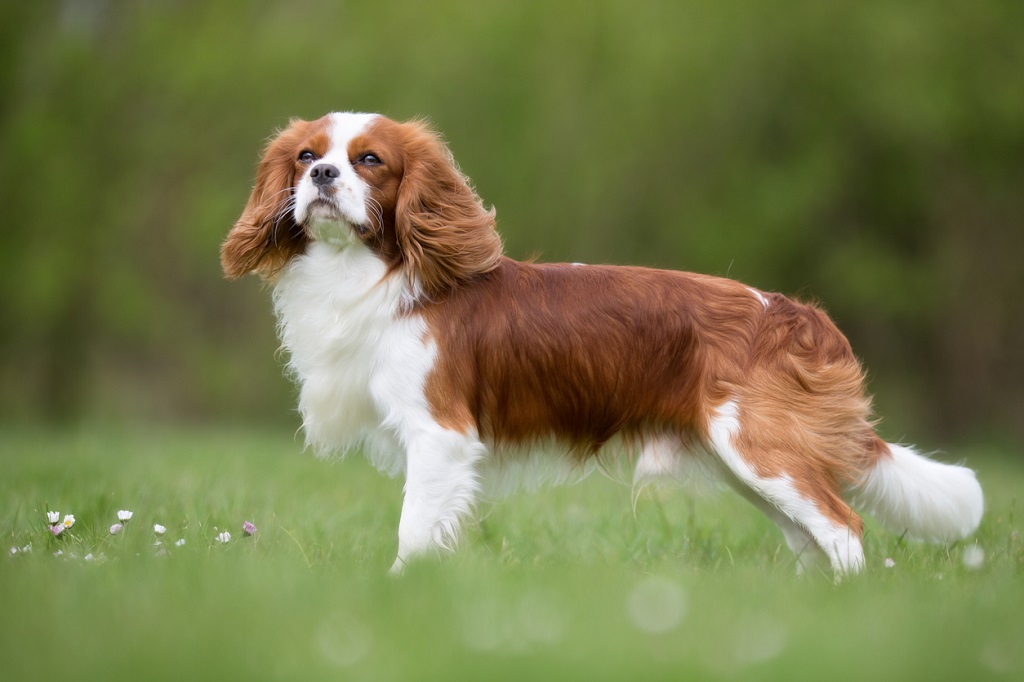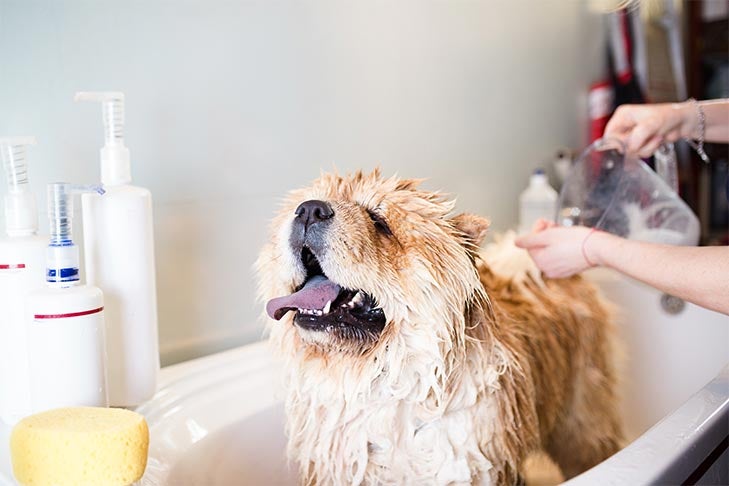“How often should I shower my dog?” is a common query among pet owners who want to ensure their furry friends are clean and healthy. Maintaining proper hygiene is crucial for a dog’s overall well-being, but finding the right bathing frequency can be confusing. In this comprehensive guide, we will delve into the factors that influence how often you should bathe your dog, such as their breed, coat type, and lifestyle. By understanding these factors, you can tailor your dog’s bathing schedule to meet their specific needs. Join us as we explore the ultimate guide to canine cleanliness and learn how to keep your four-legged companion fresh and happy.”
Introduction to Canine Hygiene
Proper hygiene is crucial for your furry friend’s health and well-being. As a responsible pet owner, understanding the basics of canine hygiene, including bathing frequency, grooming, and dental care, is essential to ensure your dog stays clean and healthy.

The Importance of Regular Bathing
Bathing your dog regularly helps to remove dirt, odors, and loose fur from their coat. It also helps to prevent skin infections and keeps their fur shiny and healthy. For most dogs, bathing once every 4-6 weeks is sufficient, but this can vary based on your dog’s breed, lifestyle, and skin condition.
Grooming Essentials
Grooming is essential for maintaining your dog’s hygiene. Regular brushing helps to prevent mats, distribute natural oils, and reduce shedding. Additionally, trimming their nails, cleaning their ears, and brushing their teeth are all important aspects of a comprehensive grooming routine.
Dental Care for Dogs
Don’t overlook your dog’s dental hygiene. Regularly brushing your dog’s teeth helps prevent plaque and tartar build-up, reducing the risk of dental issues and bad breath. Offering dental chews and toys can also help promote good oral health.
Factors to Consider when Bathing Your Dog
Bathing your dog is an essential part of maintaining their health and hygiene. However, it’s crucial to consider several factors to ensure that the bath is safe and effective.
Frequency of Baths
How often should I shower my dog? The frequency of bathing your dog depends on various factors such as their breed, coat type, and activities. While some dogs may require frequent baths, others can go longer between baths to prevent skin irritation.
Choosing the Right Shampoo
When selecting a shampoo for your dog, it’s essential to choose a product specifically formulated for dogs to avoid skin irritation or allergic reactions. Look for shampoos that are mild yet effective and avoid using human shampoos as they can be too harsh for your dog’s skin.
Bathing Technique
During the bath, ensure that you thoroughly wet your dog’s coat before applying shampoo. Use lukewarm water to avoid scalding or chilling your dog. Gently massage the shampoo into your dog’s fur and rinse thoroughly to prevent residue.
Drying and Brushing
After the bath, pat your dog dry with a towel to remove excess water. Use a pet-friendly hairdryer on a low setting to dry your dog’s coat completely. Brush your dog’s coat to prevent matting and tangles.
Understanding Your Dog’s Coat Type
When it comes to grooming your furry friend, understanding your dog’s coat type is essential for maintaining their overall health and appearance. Different coat types require varying levels of care and attention, so identifying your dog’s specific coat type can help you tailor your grooming routine accordingly.
Determining Your Dog’s Coat Type
To determine your dog’s coat type, observe the length, texture, and density of their fur. Some common coat types include:
- Short Coat: These dogs have a sleek and closely cropped coat that is easy to maintain.
- Medium Coat: Dogs with medium-length fur may require regular brushing to prevent matting and tangles.
- Long Coat: Breeds with long, flowing fur need frequent grooming to prevent mats and keep their coat looking its best.
- Curly Coat: Dogs with curly or wiry hair often require specialized grooming to prevent matting and maintain their signature curls.
Grooming Tips for Different Coat Types
Once you’ve identified your dog’s coat type, develop a grooming routine that meets their specific needs. Here are some general tips:
- Short Coat: Weekly brushing and the occasional bath are usually sufficient to keep a short coat looking healthy.
- Medium Coat: Regular brushing and grooming every 4-6 weeks can help keep medium-length fur in top condition.
- Long Coat: Daily brushing and monthly grooming appointments are essential to prevent tangles and mats in long fur.
- Curly Coat: Regular detangling, trimming, and grooming by a professional can help maintain a curly coat’s appearance.

Recommended Bathing Frequency for Different Breeds
When it comes to bathing your dog, the frequency may vary depending on the breed, coat type, and activity level of your furry friend. Here are some general guidelines to help you determine how often you should shower your dog to maintain their cleanliness and skin health.
Breeds with Oily Skin
Dogs with oily skin, such as Basset Hounds or Cocker Spaniels, may need more frequent baths to prevent a buildup of oil and dirt that can lead to skin issues. Weekly baths using a mild dog shampoo can help keep their coat and skin healthy.
Short-Haired Breeds
Breeds with short hair like Beagles or Dalmatians are relatively low maintenance in terms of bathing. Monthly baths or as needed depending on their outdoor activities are usually sufficient to keep their coat clean and shiny.
Double-Coated Breeds
Double-coated breeds like Huskies or German Shepherds have a natural protective layer that requires minimal bathing. Seasonal baths or only when they are visibly dirty are recommended to avoid stripping their coat of natural oils.
Signs Your Dog Needs a Bath
Regular bathing is crucial for your dog’s hygiene. Pay attention to these signs that indicate your furry friend needs a bath:
1. Unpleasant Odor
If your dog has a noticeable smell in , it’s time for a bath. A foul odor could be a sign of dirt and bacteria buildup on their coat.
2. Messy Coat
When your dog has visible dirt, mud, or stains in their fur, it’s a clear indication that they need a good scrub. Dogs that love rolling in the grass are likely to get messy often.
“>
Frequently Asked Questions
- How often should I shower my dog?
- The frequency of bathing a dog depends on several factors such as breed, activity level, skin condition, and lifestyle. In general, most dogs benefit from a bath every 4-6 weeks. However, some breeds may require more frequent baths while others can go longer between baths.
- Can I bathe my dog too often?
- Yes, bathing your dog too frequently can strip their skin of natural oils, leading to dryness and irritation. It is important to strike a balance and not bathe your dog more often than recommended based on their specific needs.
- How do I know if my dog needs a bath?
- Some signs that indicate your dog may need a bath include a strong odor, visible dirt or debris in the coat, itching or scratching more than usual, or if they have gotten into something messy. Regular grooming and monitoring your dog’s skin and coat can help you determine when it’s time for a bath.
- What if my dog hates baths?
- If your dog is fearful or resistant to baths, you can try making the experience more positive by using treats, gentle reassurance, and gradually introducing them to water. You can also consider professional grooming services that specialize in handling dogs that are anxious about bathing.
- Are there alternatives to traditional baths for dogs?
- Yes, there are alternatives to traditional baths for dogs, such as dry shampoo, grooming wipes, and waterless sprays. These products can help freshen up your dog between baths without the need for a full bath. However, they may not be suitable for all dogs or all situations.
Final Thoughts
Understanding how often you should shower your dog is crucial for maintaining their hygiene and health. While the frequency varies based on breed, lifestyle, and skin condition, a general rule of thumb is to bathe your furry friend every 4-6 weeks. Regular grooming and hygiene practices, such as brushing their coat, cleaning their ears, and trimming their nails, are also essential for their overall well-being.
Remember, over-bathing can strip your dog’s skin of natural oils, leading to dryness and irritation. On the other hand, infrequent bathing may result in a smelly and dirty pup. By striking the right balance and observing your dog’s individual needs, you can keep them clean, healthy, and happy.



